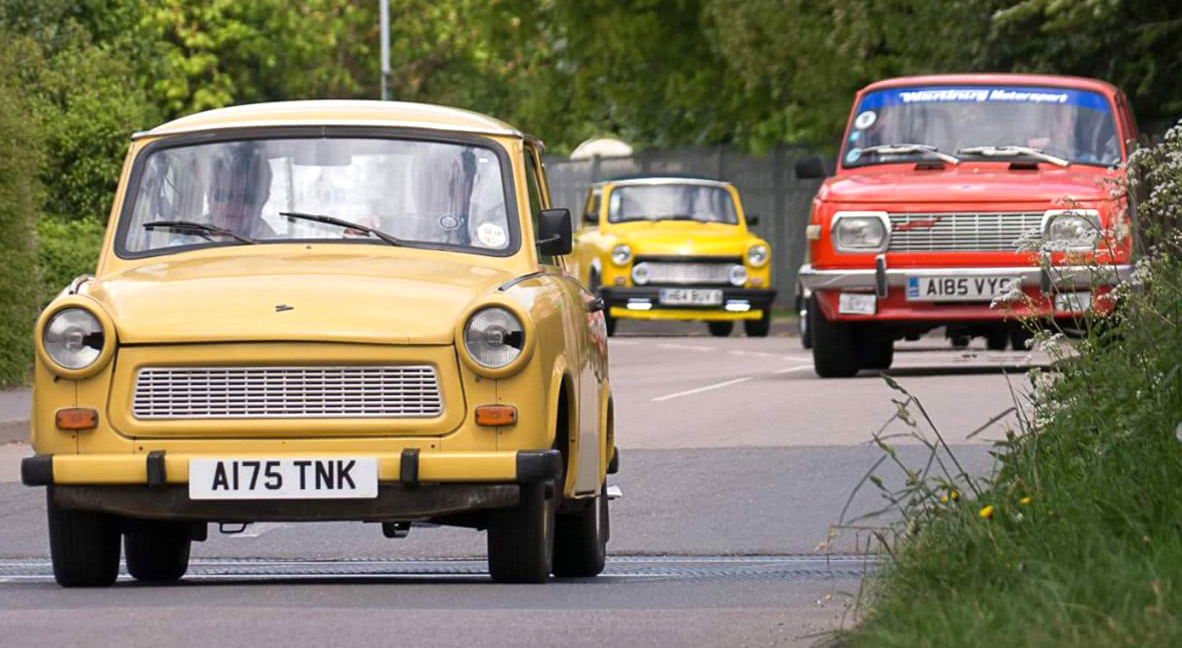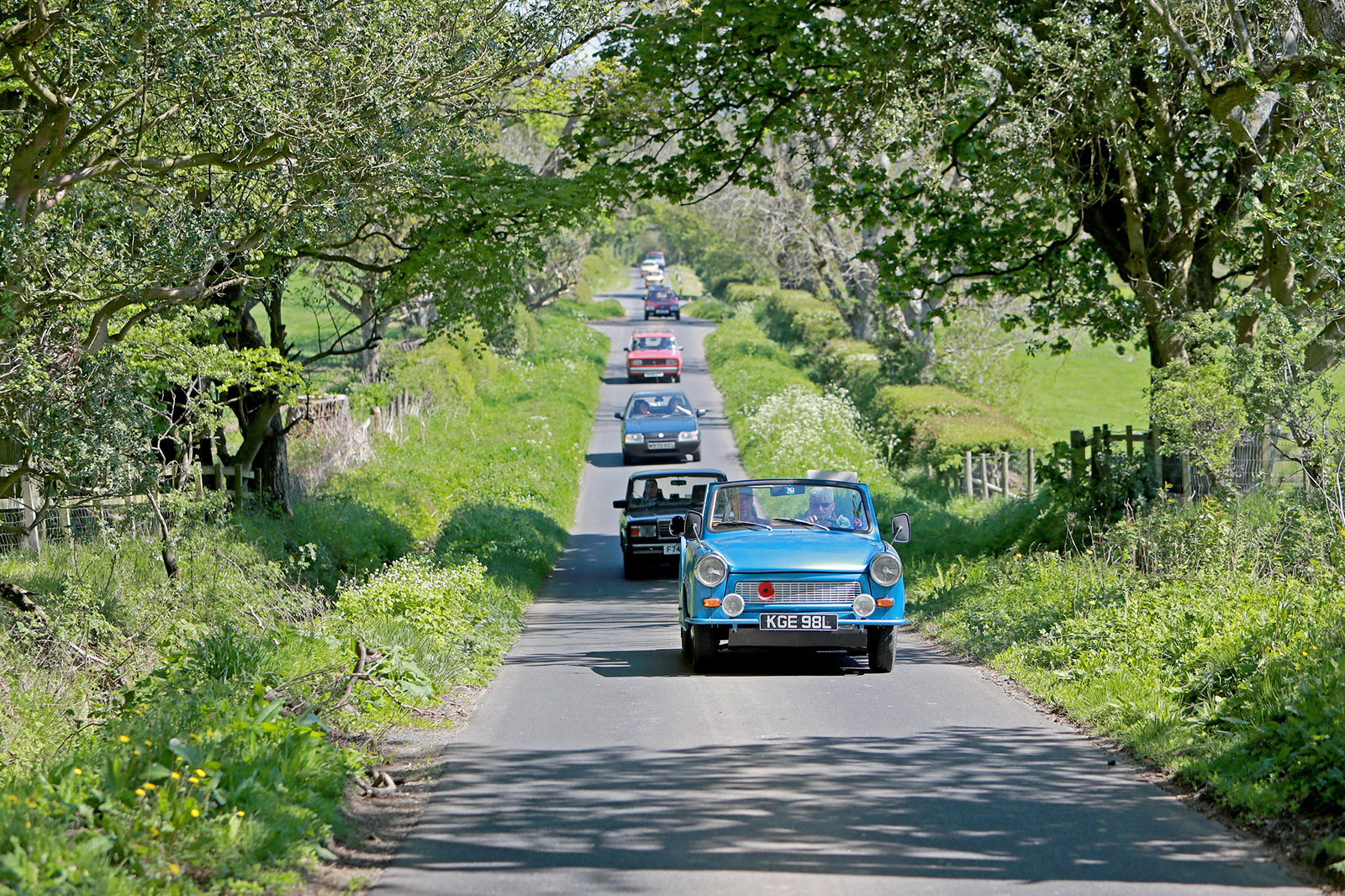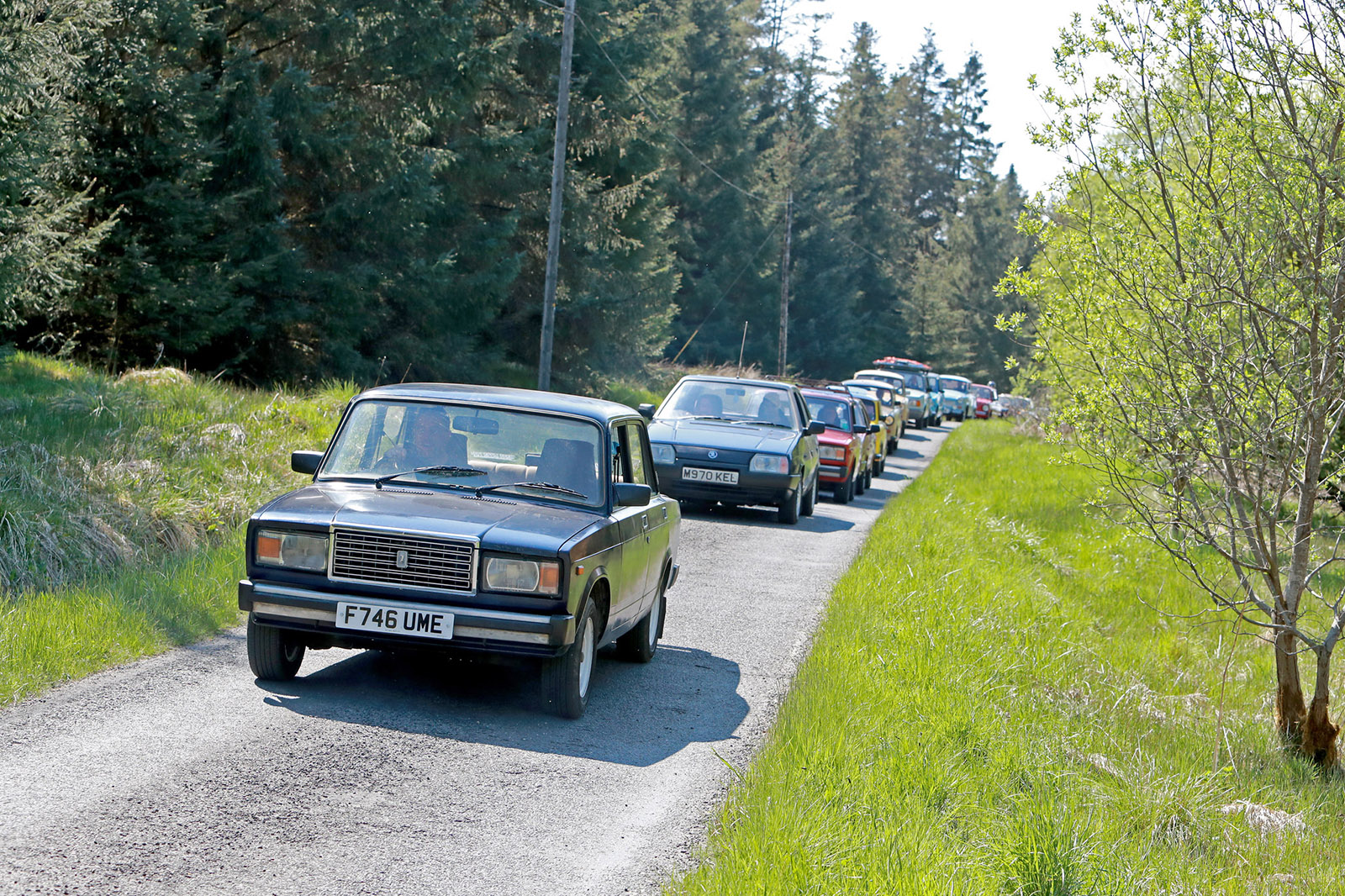A British two-stroke car club starts a carbon offsetting scheme

In addition to the Austin Seven Club, which plans to plant trees in Madagascar, an historic British motoring club has already taken steps to recover toxic emissions into the environment: that’s the Wartburg Trabant IFA Club, which brings together the two-stroke engines of the Cold War
How much could the the cars of the East have polluted with their two-stroke engines from the late 1940s until the collapse of Communism? How much CO2 emitted only by the thousands of Trabants queuing to flee the DDR on November 9, 1989, when the Berlin Wall collapsed? By now it is a question of rhetorical questions, it is useless to ask them: it is water under the bridge for a while. Or rather, air. But today, after the awareness of the last few decades, there are those who are in charge of putting the accounts back on track: for every km traveled with the same engines as at the time, “compensation” must be paid to the environment. How? Planting a tree in a forest.
Wild engines. The proportion calculated by the Wartburg Trabant IFA Club of Peterborough, near Cambridge, is 1.1 trees to be planted per year for every 1,000 miles (1,600 km) traveled by a Trabant and 1.3 trees if a Wartburg is traveling. And the beauty is that after the calculations the Club has moved on to facts, creating a small forest and inviting anyone to participate. Here is the address to find out more about what has been done so far and the location chosen for the new forest, which is in the Scottish Highlands and has been called Wartburg Woods (https://treesforlife.org.uk/groves/373342/). If desired, the trees can be purchased directly from the dedicated website, at a cost of 6 pounds each (just a little bit more than 7 euros), with the guarantee that they will never be exploited for commercial use. As for the selected species, they are the same present in the area and are already being recovered in a natural habitat restoration program.
Forty trees a year can be enough. The number of new plants, defined by the club at 40 per year, neutralizes the association’s entire annual ecological footprint, which organizes three gatherings each year and brings together 290 members with a total of 376 vehicles. Vehicles that are not only the Trabi, as the the Trabant P601, the symbolic sedans of East Germany, were affectionately called, but also motorcycles, trucks and vans. The Wartburg Trabant IFA Club includes vehicles produced by 41 brands born within the “Iron Curtain”: from other East Germans – such as Auto Union, Wartburg, Robur, Simson, Barkas, DKW, IFA, IWL, MZ and QEK – to the Russians GAZ, Izh, Lada, Moskvitch, Riga, UAZ, Ural, Volga/VAZ, Voskhod and Zaporozhets. Passing through many other Eastern European manufacturers including, just to name a few, the Bulgarians Balkan, the Polish Żuk, Romet and Tarpan, the Czechs Tatra, Škoda and Velorex, the Hungarians Ikarus, the Romanians Oltcit and, finally, the Yugo and Zastava brands of the former Yugoslavia.
Oil burns. In this first year, the Wartburg Trabant IFA Club brought 20 new trees to Wartburg Woods, at a total cost of £ 250. Their long-lasting project in favor of the environment recovers not only from historical accelerators hits: the members of the club, as well as anyone else who wants to contribute, are invited to compensate for the emissions of classic of another kind and, why not, their modern cars. But how was the quantity of trees to be planted to eliminate the damage of the current Soviet cars among the subjects of her Majesty determined? They didn’t measure the total amount of emissions, as you may think, but they counted the quantity of used fuel considering one tree per 100 liters. “The research found that a Trabant P601 that ran 11,822 miles (19,025 km), traveled 41,49 miles (66,77 km) with one gallon of fuel (4,54 liters), including the oil needed to the two-stroke engine”, explains Wartburg Trabant IFA Club president Mel Holley, who also considered the consumption of a Wartburg 535 sedan: 33,88 miles with a gallon, for 7,369 miles (about 54,52 km per gallon, for a total of 11,859 km).
© RIPRODUZIONE RISERVATA





